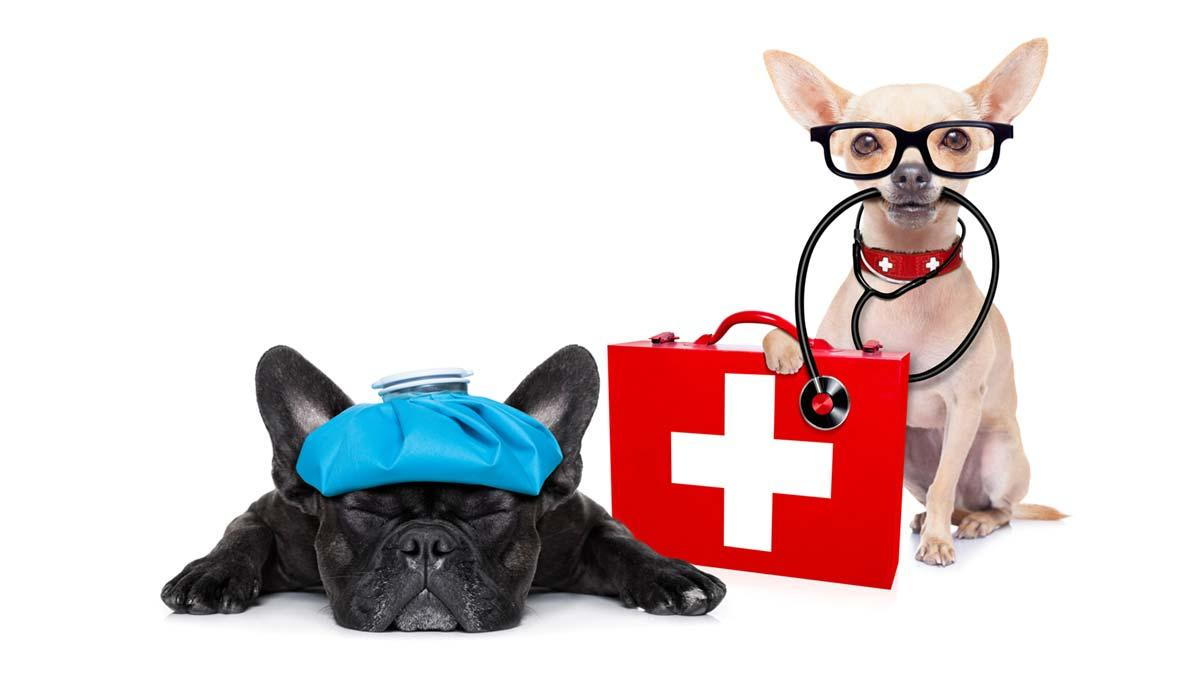
June is National Pet Preparedness Month, a time dedicated to raising awareness among pet owners about the steps necessary to ensure the safety and care of pets during emergencies. This observance serves as a reminder that pets, much like human family members, need a detailed plan tailored to their specific needs in the event of natural disasters or other emergencies. National Pet Preparedness Month this June encourages pet owners to develop comprehensive emergency plans, gather essential supplies, and stay informed about the best practices for pet care during crises.
The initiative underscores the importance of preparing an emergency kit specifically for pets, understanding evacuation procedures, securing proper identification, and ensuring pets have a safe shelter during catastrophic events. Recognizing that emergencies can happen at any time and that each type of natural disaster requires a unique approach to safety, the campaign also focuses on educating pet parents about creating a viable emergency strategy that includes their furry, feathered, or scaled friends.
In addition to safeguarding pets during immediate threats, National Pet Preparedness Month also places emphasis on long-term preparedness strategies such as maintaining an up-to-date emergency kit, understanding seasonal challenges, and knowing how to communicate with emergency responders about pets in the household. Let’s look deeper into what pet preparedness involves and why it’s crucial for every pet owner.
History of National Pet Preparedness Month
National Pet Preparedness Month was established by the Federal Emergency Management Agency (FEMA) in response to the increasing need for pet-specific emergency planning. The observance gained significant traction after Hurricane Katrina, which highlighted the devastating impact natural disasters can have on pets and their owners. Many pets were lost, left behind, or not adequately cared for due to a lack of preparedness and awareness among pet owners and emergency responders.
The history is rooted in learning from past mistakes and ensuring that pet owners are equipped with the knowledge and tools to better protect their pets. It is a time to reflect on the lessons learned from previous disasters, improve emergency plans, and ensure that pets are not only safe but also a prioritized part of evacuation strategies.
This annual observance has grown to include a variety of activities, from educational campaigns to community drills, all designed to enhance the ability of pet owners to care for their pets during emergencies. The goal is to integrate pet preparedness into the broader community's emergency preparedness plans, making it as routine as any other family safety measure.
Emergency Kit
Every pet owner should have a separate emergency kit that is specifically tailored to their pet’s needs. The kit should include items such as water (with a reminder to check and refresh water supplies regularly), food, a first aid kit, medications, copies of medical records, sturdy leashes or carriers, cat litter and plastic bags for waste, and toys to comfort and entertain your pet. It’s also wise to include recent photos of your pet in case they get lost during the chaos of an emergency.
When preparing an emergency kit, talk to your veterinarian and consider the specific needs of your pet based on their species, size, and medical conditions. For instance, small animals might require different items in their kits compared to large animals. Service animals should have their emergency items as well, including any specialized gear or identification they might need.
Having a well-prepared emergency kit readily accessible can make all the difference in a stressful situation. It ensures that, in the event of a sudden evacuation or disaster, your pet's basic needs are covered, allowing you to focus on managing the emergency more effectively.
What Should I Include in My Pet Emergency Bag?
A well-prepared pet emergency bag is essential for quick evacuations and ensuring your pet's needs are met during a disaster. Your pet’s emergency kit should include the following items:
- Water and a portable water dish
- At least a three-day supply of pet food in airtight containers
- Medications and copies of medical records
- A first aid kit with items tailored to your pet’s needs
- Cat litter, litter box, and plastic bags for waste disposal
- Sturdy leashes or harnesses (even for cats)
- Comfort items such as toys and blankets to reduce stress
- Current photos and descriptions of your pets in case they get lost
- Emergency contact information, including your veterinarian and nearby pet-friendly shelters
Remember to check and refresh the contents of your emergency bag every few months to ensure that food, water, and medications are fresh and up to date.
Evacuation
Understanding and planning evacuation routes and procedures are crucial aspects of pet preparedness. Pet owners should identify pet-friendly hotels or shelters in advance and have a plan for transporting pets safely. It's important to practice evacuation routes with pets to ensure they are comfortable and secure during what can be a stressful time.
Include sturdy leashes or secure carriers in your plans to manage pets during an evacuation. This not only helps to ensure their safety but also makes it easier to keep them with you. Remember to keep contact information, including phone numbers of emergency shelters and veterinarians, easily accessible.
Planning for evacuation should also take into consideration the type of natural disaster likely in your area, whether it’s hurricanes, floods, or wildfires, and adapt your plans accordingly. This might mean having multiple potential evacuation routes or even practicing timed evacuations to ensure speed and efficiency when every second counts.
Shelter
Identifying a safe place for your pets in the event of an emergency is a key component of preparedness. American Red Cross shelters, for example, have specific protocols for accepting pets. Knowing these regulations and alternatives that cater to pets, such as pet-friendly hotels or animal shelters, can greatly reduce the stress associated with finding last-minute accommodations for your pets.
When looking for shelters, consider both temporary and long-term options, depending on the expected impact of the disaster. Ensure that any shelter you choose can accommodate the specific needs of your pets, such as space for large animals or conditions suitable for pets with health issues.
Additionally, it’s important to have a family emergency plan that includes your pets. This plan should detail how you will handle your pets during an emergency, including how to secure them safely, where to take them, and how to care for them in the aftermath of a disaster. This plan should be practiced regularly and adjusted as necessary to ensure it remains effective and up-to-date.
Seasonal Safety for Pets
Keeping Animals Safe When It's Hot
When temperatures rise, keeping your pets cool and hydrated becomes crucial. Always ensure your pets have access to plenty of fresh water and a shady spot away from direct sunlight. Consider lightweight, breathable pet clothing or cooling mats for additional comfort. Avoid walking your dogs on hot pavement, which can burn their paws, and try to schedule outdoor activities during cooler parts of the day. Always remember, never leave your pets in a parked car, as temperatures can quickly rise to dangerous levels.
Keeping Animals Safe When It's Cold
Cold weather poses different challenges for pets. Provide warm, insulated bedding and shelter that shields them from the elements. Pets that are small have short fur or are older may benefit from wearing sweaters or coats when going outside. Increase their caloric intake if they spend a lot of time outdoors, as they will burn more energy while keeping warm. Keep an eye out for antifreeze spills, which are poisonous but enticing to pets, and ensure that your pet's paws are clean of salt and ice melt, which can be irritating and harmful if ingested.
What's the Best Way of Knowing Where My Pet is at All Times?
The most effective way to keep track of your pets is to use microchips and GPS tracking devices. A microchip, which is a small, electronic chip enclosed in a glass cylinder, is implanted under the pet's skin and can be scanned by a veterinarian or animal control officer if your pet is lost. Ensure that your pets' microchip registration information is up-to-date with your current contact details.
For additional security, consider a GPS tracker attached to your pet’s collar, which allows you to monitor their location in real-time through a mobile app. This is particularly useful in managing the whereabouts of pets that are prone to escaping or getting lost.
How Can I Alert Emergency Response Teams of a Pet in the House?
In the event of an emergency where you might not be home, it's crucial to alert rescue workers that pets are inside your house. Place a pet alert sticker on your front door or window detailing how many pets are inside and what kind. These stickers can inform firefighters or emergency responders about the presence of your pets, ensuring they are not overlooked.
Keep a list of your pets, including their names, breeds, ages, and any specific medical concerns, near your emergency exits or in your emergency kit. This information can be invaluable to emergency responders in prioritizing rescue efforts.
National Pet Preparedness Month Activities
Let Everyone Know
Use National Pet Preparedness Month as an opportunity to spread awareness about the importance of pet preparedness in your community. Share information and resources on social media and encourage discussions among pet owners about best practices for pet safety during emergencies.
Get Planning
Organize workshops or seminars with local veterinarians or emergency responders to teach pet owners how to prepare their pets for emergencies. These can include hands-on demonstrations for assembling a pet emergency kit or first aid techniques.
Visit or Donate to Your Local Animal Shelter
Supporting local animal shelters is crucial, especially during National Pet Preparedness Month. Consider donating supplies, volunteering your time, or even adopting a pet in need. Shelters often play a vital role in housing and caring for pets displaced by disasters, and your support can make a significant difference.
How to Keep Your Pet Safe During a Disaster
Regularly Clean Their Space
Keep your pet’s living area clean and free from clutter to minimize the risks during a disaster. Regular cleaning can prevent accidents, especially in stressful situations where your pet’s normal routine might be disrupted.
Remember to Vaccinate
Ensure your pet’s vaccinations are up to date to protect them from diseases, particularly if they end up needing to stay in a shelter or another location with other animals. Current vaccinations can prevent many common ailments that can complicate the already stressful situation of a disaster.
Check for Potential Hazards Around You
Regularly inspect your home and yard for potential hazards like loose wires, poisonous plants, or unsecured heavy objects that could harm your pet during a disaster like an earthquake or severe storm. Ensuring your environment is safe can prevent injuries and provide peace of mind.
Why We Love National Pet Preparedness Month
Pets Are Treasured Members of the Family
This month reminds us that pets are integral members of our families and deserve the same level of emergency preparedness as any other family member. It strengthens the bond between pets and owners, highlighting the importance of proactive care and preparedness.
It Improves Disaster Preparation Skills
By focusing on pet preparedness, pet owners are also indirectly improving their overall disaster readiness. This can make handling emergencies more manageable and less chaotic for everyone involved.
It Prevents Past Mistakes from Happening Again
This annual event serves as a critical reminder of the lessons learned from past disasters, like Hurricane Katrina. It ensures that the health and safety of pets continue to be a priority during emergencies, preventing past oversights and ensuring better outcomes for pets and their owners.
By focusing on these elements, Phoenix Veterinary Center aims to foster a community well-prepared to handle any emergency with the well-being of every pet in mind.
Take Action for Your Pet's Safety Today!
Don't wait for an emergency to find you unprepared. This National Pet Preparedness Month, join us at Phoenix Veterinary Center in making the safety and well-being of our pets a priority. Start by assembling your pet’s emergency kit, updating their microchip information, and reviewing your emergency plans. Contact us for more tips, resources, and personalized guidance to ensure your furry family members are protected in any situation. Together, we can make a difference in the lives of our pets—ensure they're safe, secure, and ready for anything.


